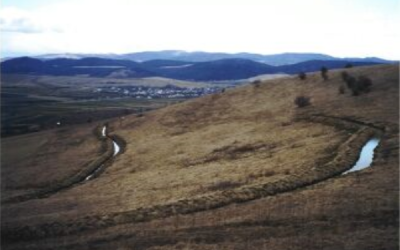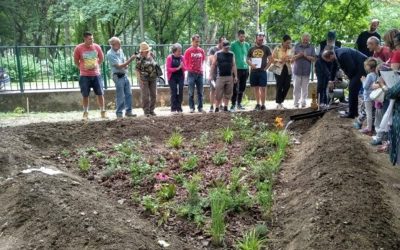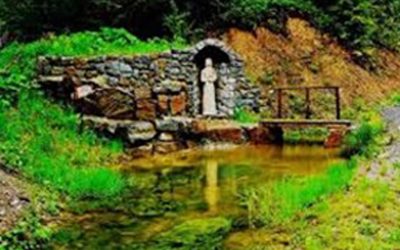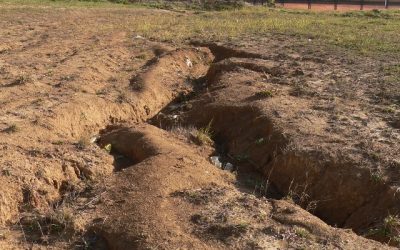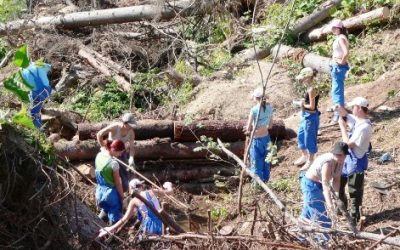situation problem
In Slovakia, the structure of the agricultural landscape changed significantly in the second half of the last century. Industrial agricultural production took off, drying out farmland over a period of several decades to the point where, without systemic change, the soil cannot regenerate and return to fertility.
Goal of the Project
Bringing life back to damaged land – to start the regeneration of agricultural land in the Drienová Park in the Rajecka Valley in the Žilina Region, where the area of such damaged land is 26 hectares. Keeping the water that falls into the area in the form of soot in the drained agricultural land.
The basic idea is that leaving more water on the farm will not only increase photosynthesis for biomass production, but also reduce temperature extremes, especially in summer, by increasing water evaporation through the vegetation.
Solution
The initiative to establish the Bioclimatic Park, as well as its development, is based on the idea of Ladislav Žideka, who encourages the local community and raises funds from domestic and international sources. The experience gained will be a very good and attractive example of innovative complex restoration of damaged ecosystems, human ingenuity and the return of a new generation of young people to the roots of responsibility for land, water and biodiversity.
Implementation
In order to capture rainwater, we first had to build dikes, water pits and ponds, which are the basis for biomass production and at the same time enough water for the livestock herd.
The basic principle is to recycle not only water but also nutrients, enriching the biological and chemical processes in the soil, promoting the biodiversity of the vegetation and improving the microclimate on the farm.
Results
The farm is very often visited by whole groups of children from schools, where they are provided with environmental education, the opportunity to observe the behaviour of animals
Biomass production is increasing year by year – restoring soil fertility
Larger quantities of livestock feed
Variety and diversity
Increase in the number of animals – development of farming, beekeeping and fish farming
300 native species of fruit trees
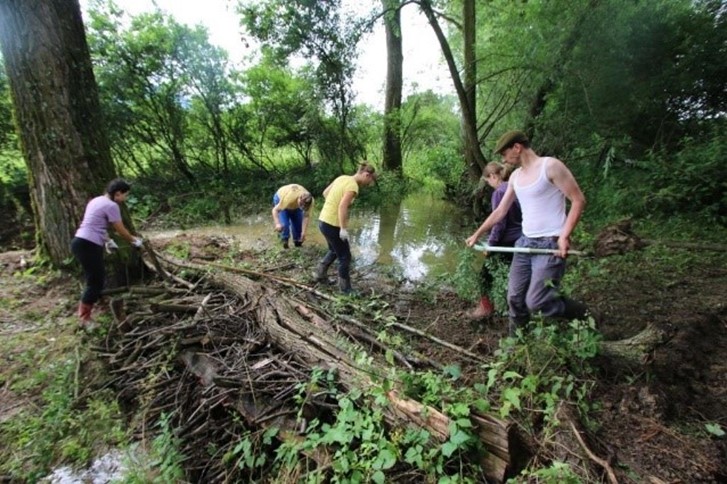
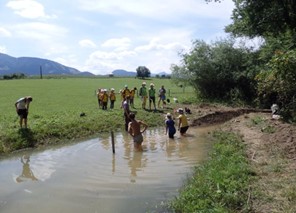
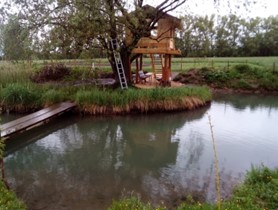
Other Implementations
Rainwater Harvesting in the Village of Torysa
In the past, the agricultural landscape in Slovakia was fragmented and diversified. Changes caused by collectivisation and the removal of traditional features such as borders and copses have led to...
Rain Gardens
With the addition of roofed, asphalted and concreted ground surfaces, stormwater runoff to streams is increasing. This not only contributes to increasing flood risks, but also to drying of the land...
Hričov Waterway
The municipality of Dolný Hričov is intertwined with many legends and rich history, thanks to which it has potential for local tourism. However, the forest ecosystem has been severely neglected,...
Water Protocol of Košice
The soil was unable to retain water, resulting in no vegetation growing on the land, which led to an increased risk of flooding. Rainwater ran off without benefit and damaged the ecosystem through...
Blue School
In primary and secondary schools, topics such as climate change, water and health protection and environmental safety are highly discussed. However, children do not have the space to apply their...
The Water Forest
In November 2004, a wind storm swept through the Tatra National Park. It not only left significant material damage, but also uprooted several hectares of forest. The ecosystem was significantly...
Contact us
Send us a message and we will get back to you


